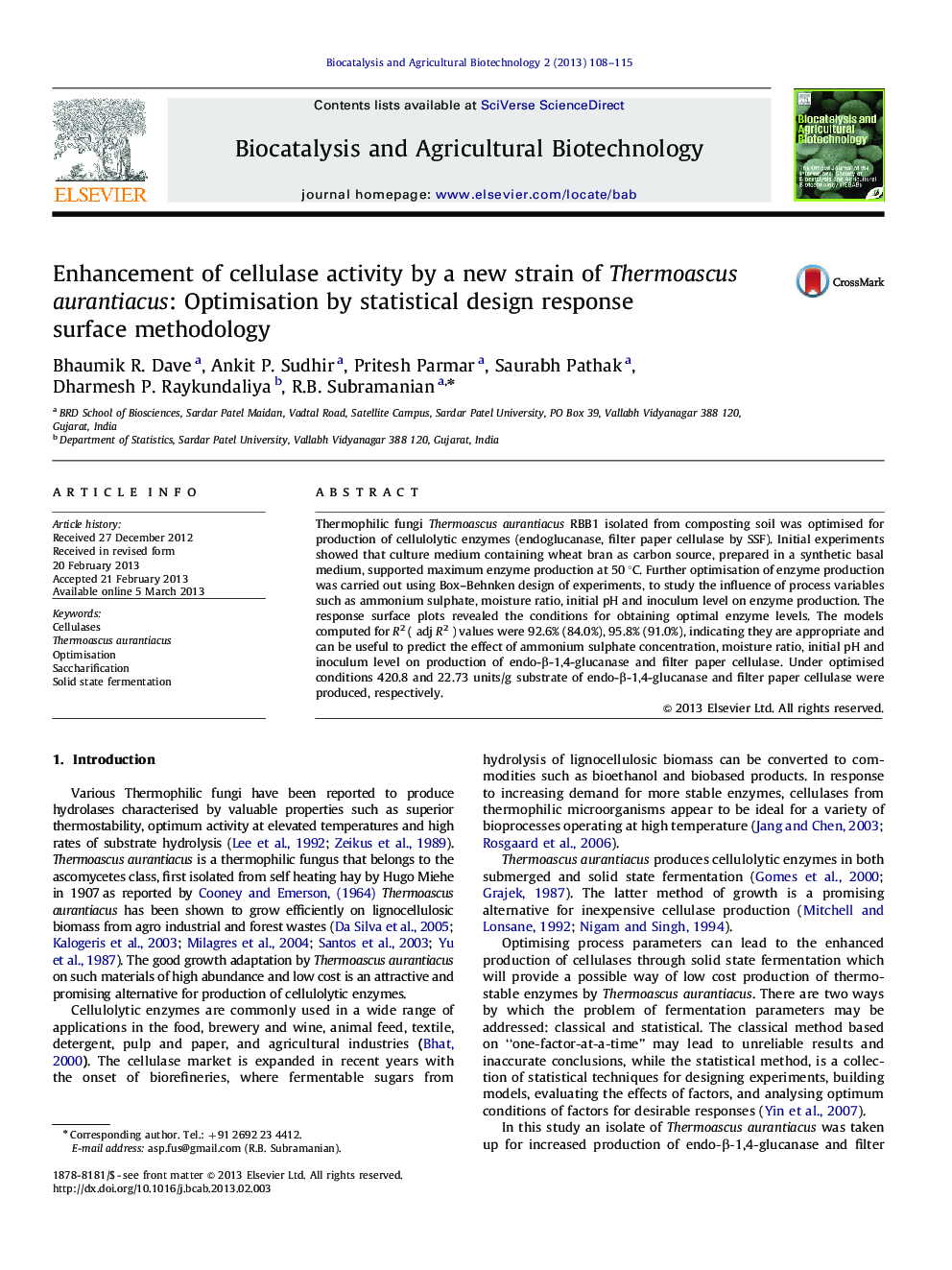| Article ID | Journal | Published Year | Pages | File Type |
|---|---|---|---|---|
| 2075589 | Biocatalysis and Agricultural Biotechnology | 2013 | 8 Pages |
Thermophilic fungi Thermoascus aurantiacus RBB1 isolated from composting soil was optimised for production of cellulolytic enzymes (endoglucanase, filter paper cellulase by SSF). Initial experiments showed that culture medium containing wheat bran as carbon source, prepared in a synthetic basal medium, supported maximum enzyme production at 50 °C. Further optimisation of enzyme production was carried out using Box–Behnken design of experiments, to study the influence of process variables such as ammonium sulphate, moisture ratio, initial pH and inoculum level on enzyme production. The response surface plots revealed the conditions for obtaining optimal enzyme levels. The models computed for R2 ( adj R2 ) values were 92.6% (84.0%), 95.8% (91.0%), indicating they are appropriate and can be useful to predict the effect of ammonium sulphate concentration, moisture ratio, initial pH and inoculum level on production of endo-β-1,4-glucanase and filter paper cellulase. Under optimised conditions 420.8 and 22.73 units/g substrate of endo-β-1,4-glucanase and filter paper cellulase were produced, respectively.
Research highlights► Response surface methodology was successfully applied to optimize cellulase production by Thermoascus aurantiacus under SSF using wheat bran as a substrate. ► Role of physicochemical parameters was comprehensively investigated. ► As per best of our knowledge, highest filter paper activity production was achieved using the new strain of Thermoascus aurantiacus.
